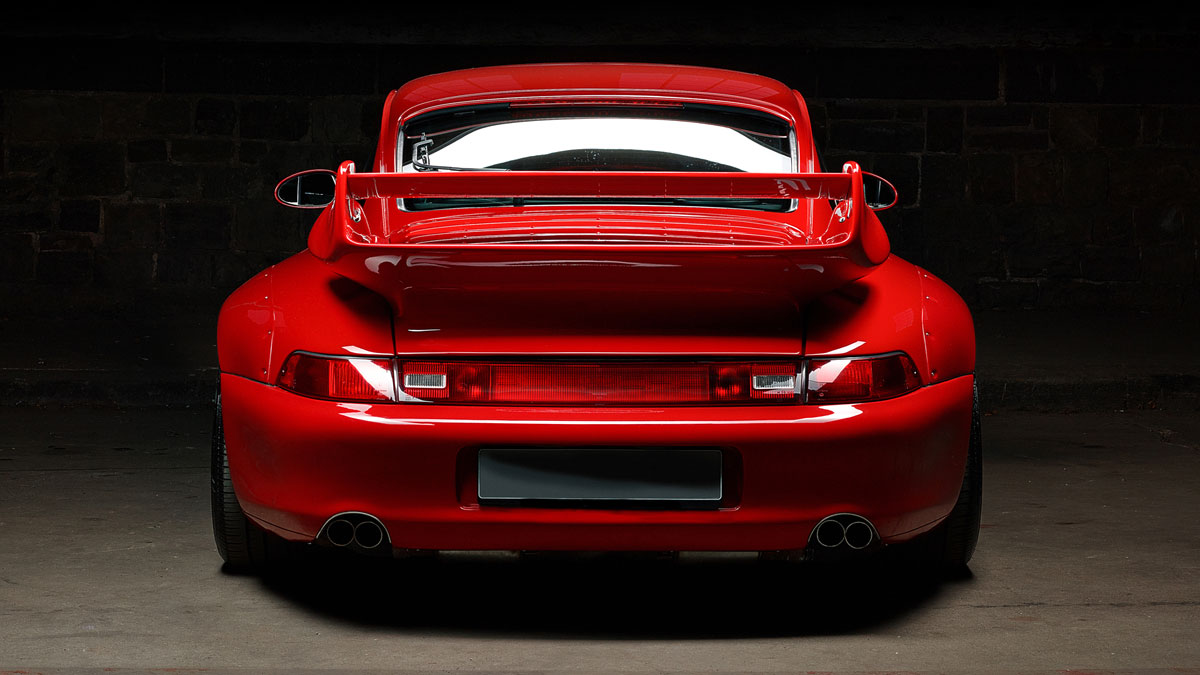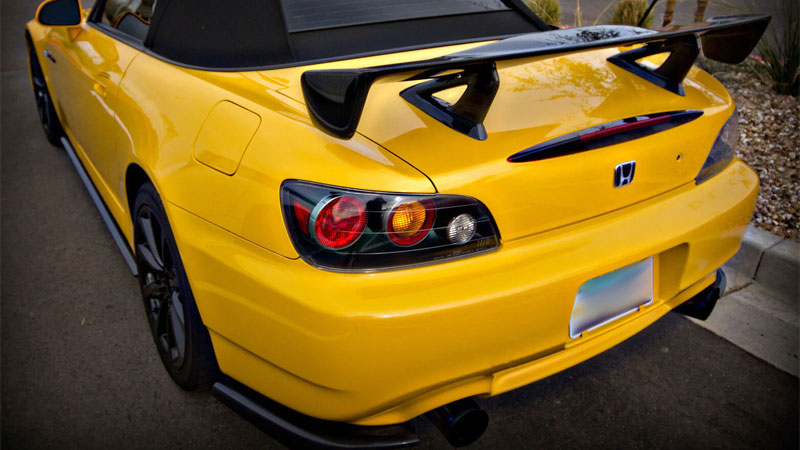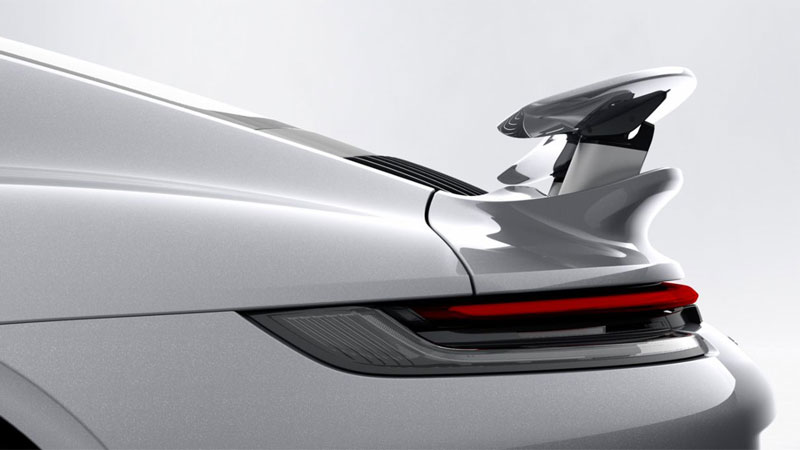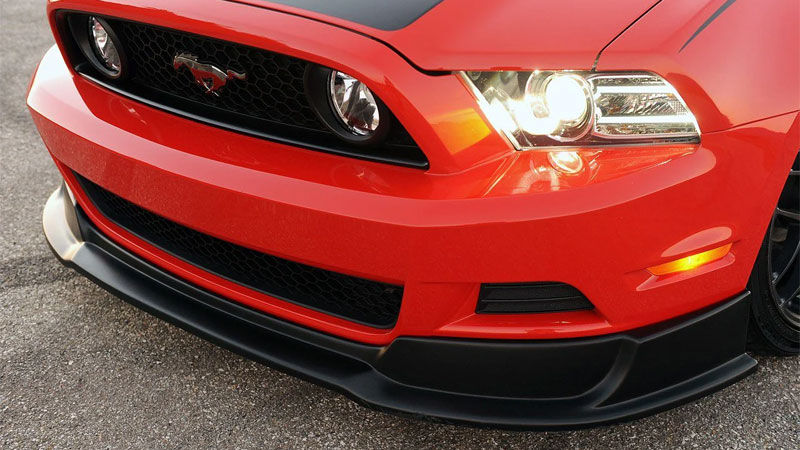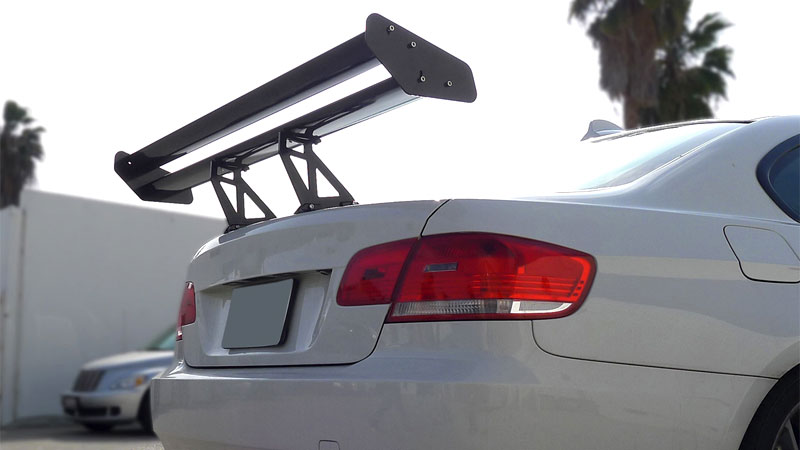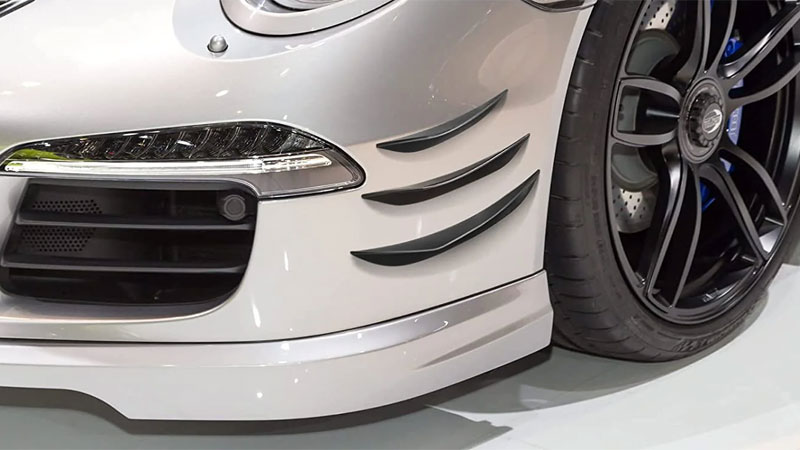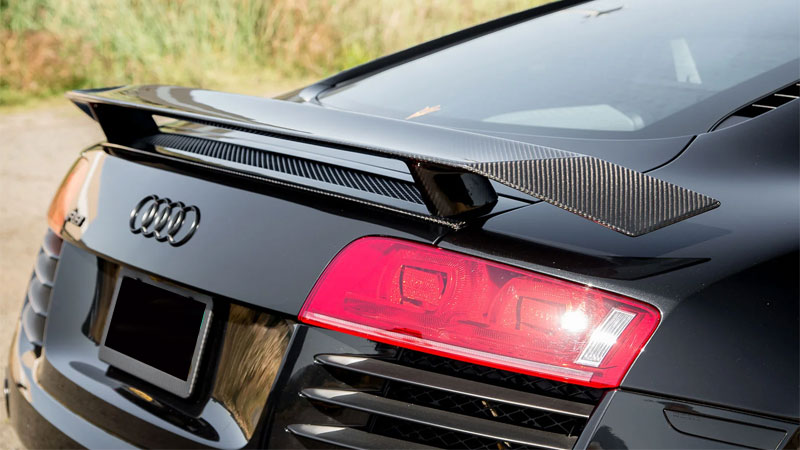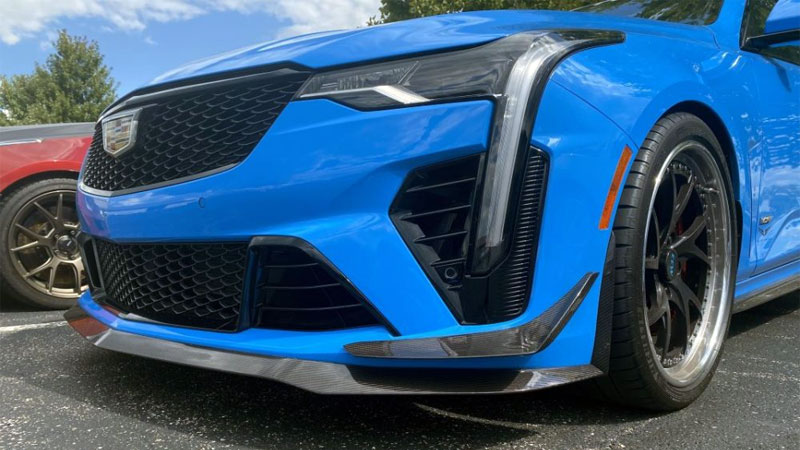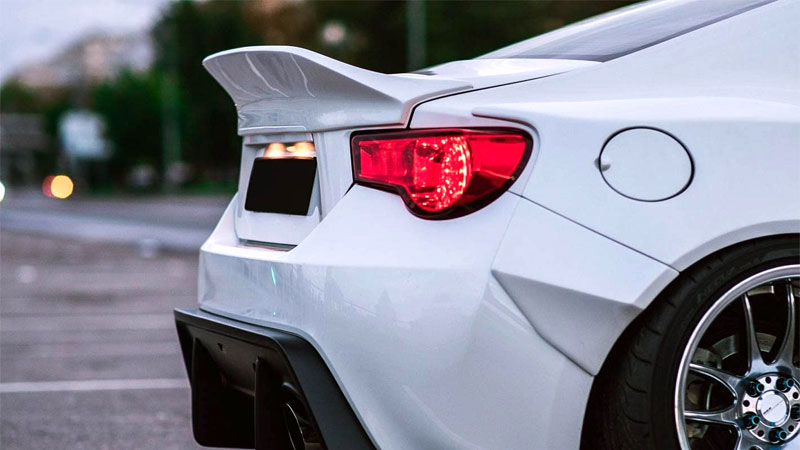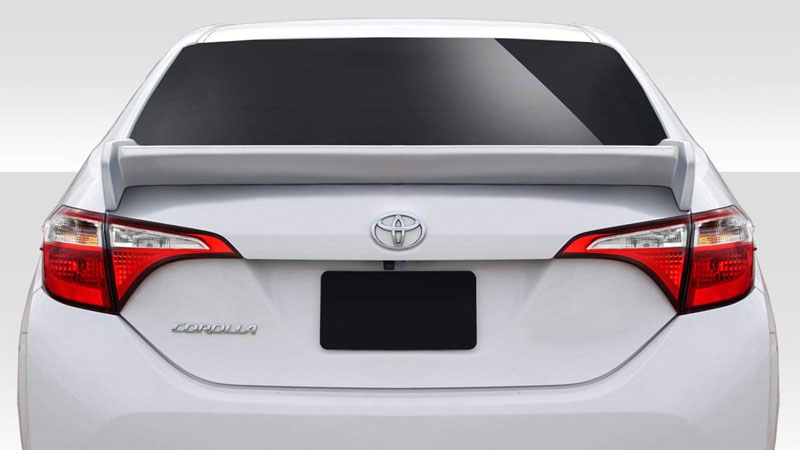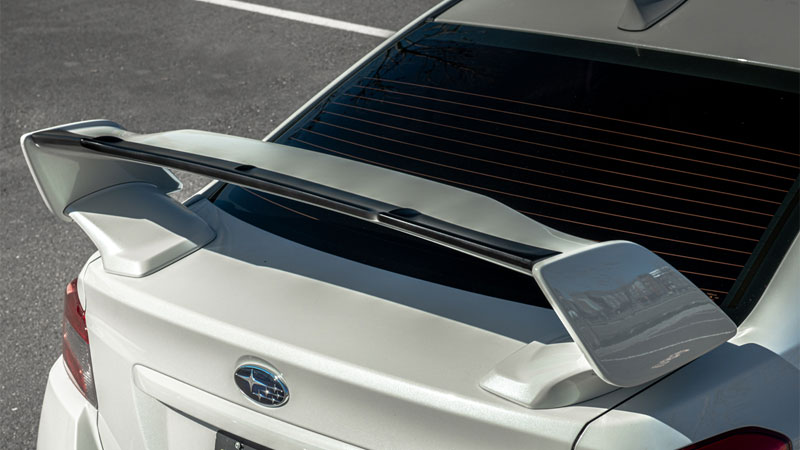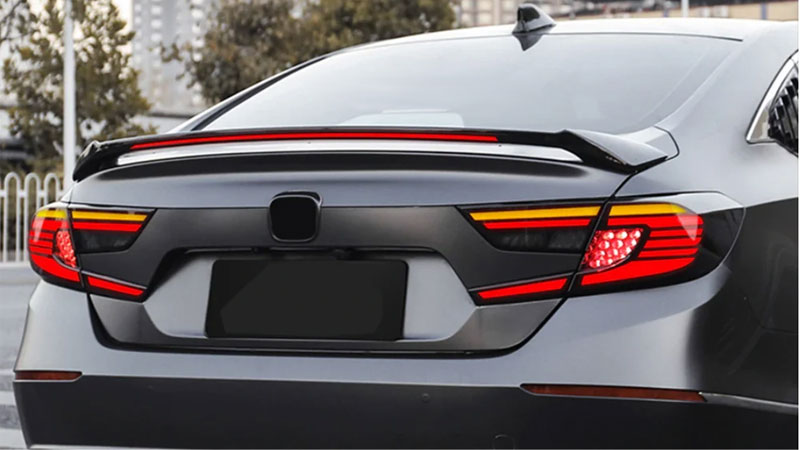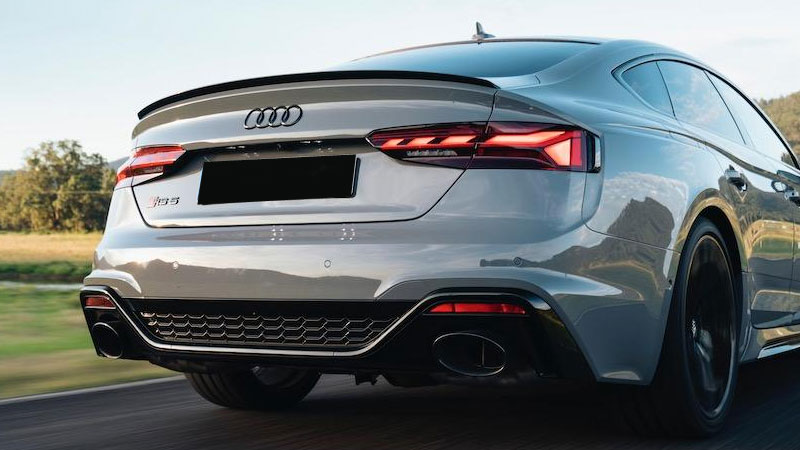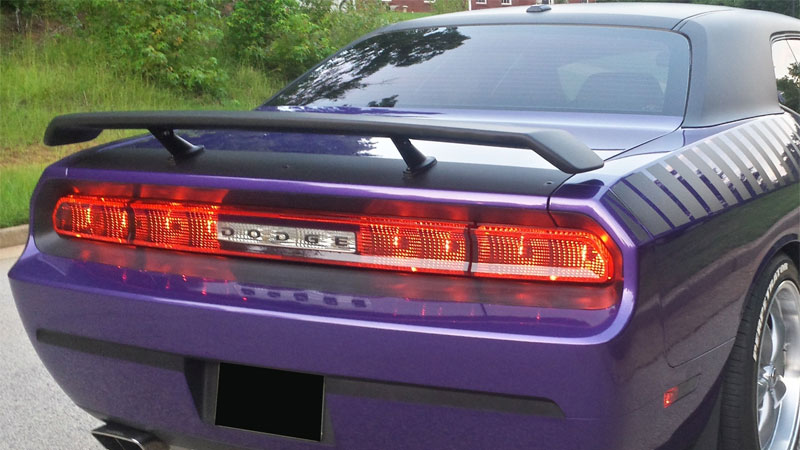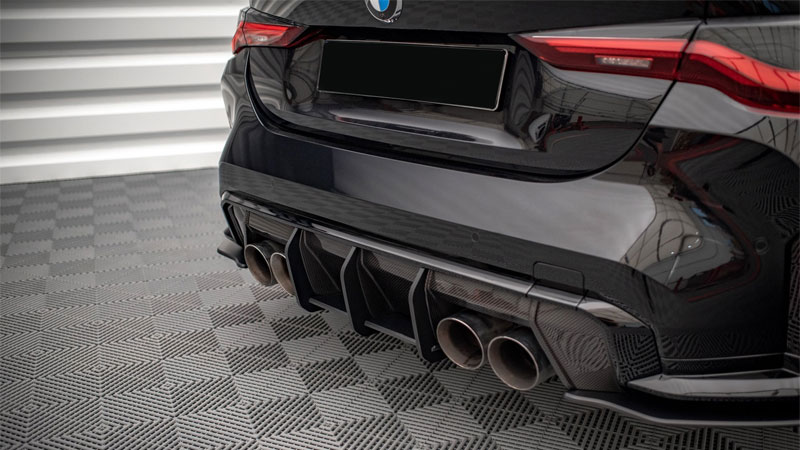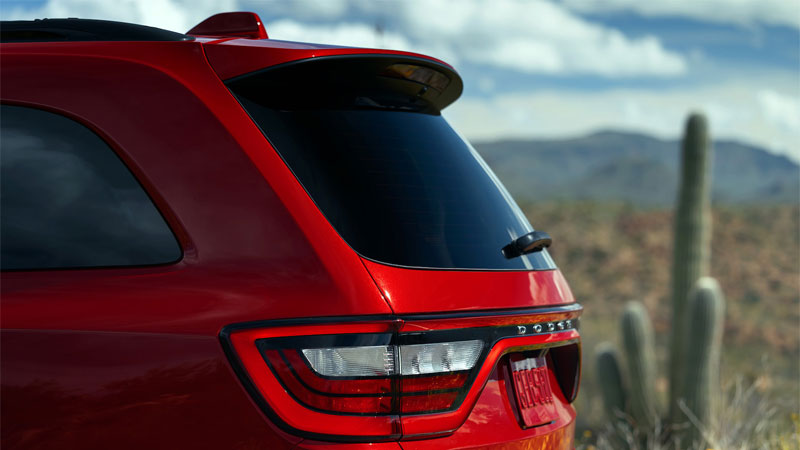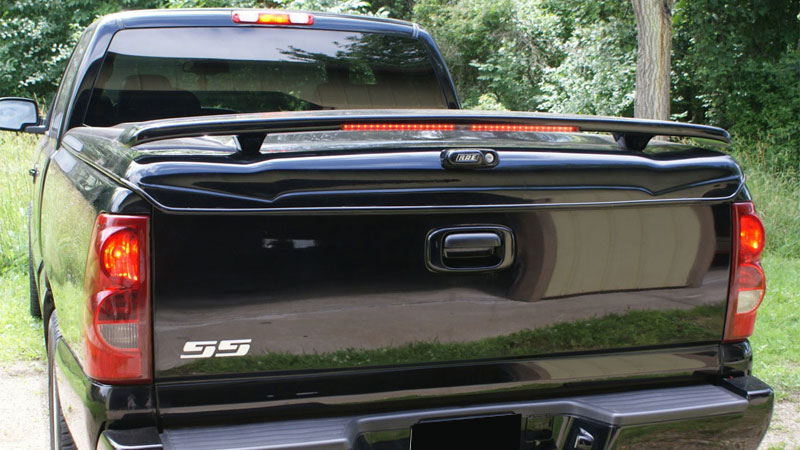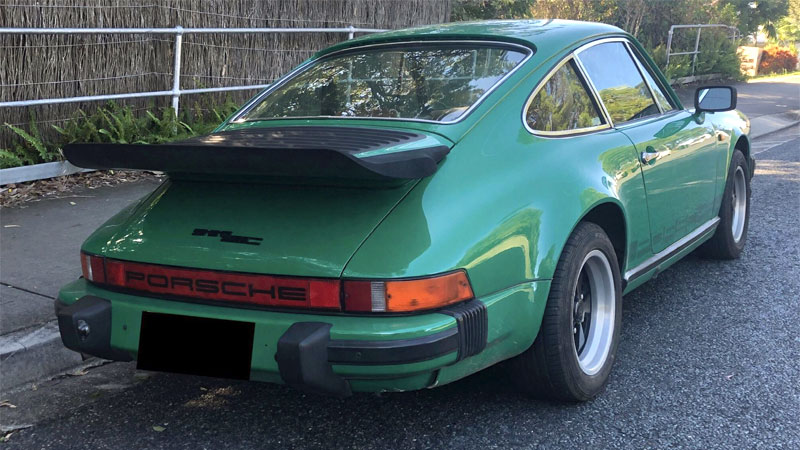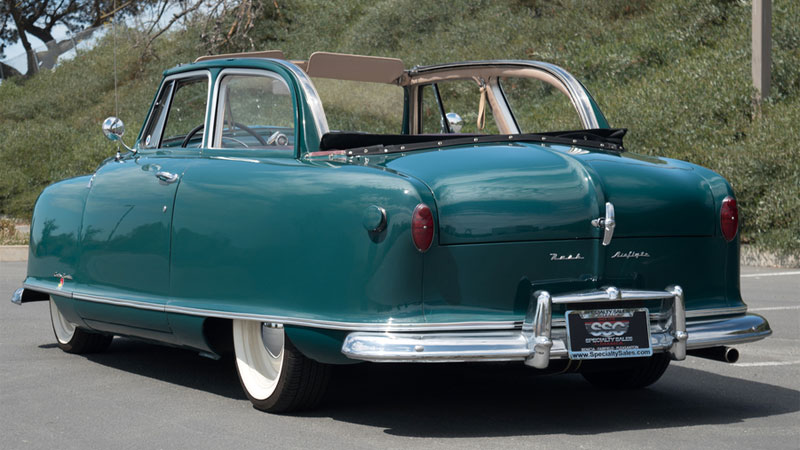When cars first began to be capable of faster speeds, a major problem arose, no pun intended. As the air flows over a car, it forms a low pressure area at the back of the car.
This, in turn, can cause the back of the car to lift off of the ground when driving at high speeds. Since increased vehicle weight negatively impacts handling, a method needed to be found to keep the car’s butt on the ground.
Taking a page from the aerodynamics of planes, engineers decided the best way to prevent this low pressure area was to “spoil” the airflow. Thus, the spoiler was born, a horizontal bar mounted on the back (and in some cases the front) of a car or truck that breaks up the airflow at higher speeds and prevents lift while also reducing drag.
Most spoilers are functional, with those mounted at the front commonly being referred to as “air dams”. However, some are purely decorative and one of the most noticeable parts of a car. Here are 19 different kinds of spoilers you might find on a car or truck and what sets each one apart.
See Also – 6 Types of Window Tint
Types of Spoilers
1. ABS Plastic Spoiler
Cheap and effective, ABS plastic is one of the most popular materials used for spoilers. This is the same type of plastic used for toys and quality model kits, so don’t expect these spoilers to be very durable.
In fact, the durability decreases with age, making ABS spoilers among the most commonly damaged parts of a car’s exterior. That said, these spoilers often have granular fillers or other additives to make the plastic more rigid and add a little extra durability.
2. Active Spoiler
This type of spoiler can be adjusted or moved based on driving conditions. It is typically controlled by the vehicle’s computer system or by the driver, and can provide improved aerodynamic performance in a variety of situations.
An active spoiler may be designed to automatically adjust based on factors such as vehicle speed, acceleration, and braking, as well as road conditions and wind speed. For example, the spoiler may be raised or lowered to increase downforce and reduce lift at high speeds, or to improve braking performance by providing additional drag.
Some active spoilers may also be adjustable manually by the driver, using controls located inside the vehicle. This can allow the driver to customize the spoiler’s position based on personal preferences or specific driving conditions.
See Also – How Long Is a Car? (44 Popular Examples)
3. Air Dam (AKA Chin Spoiler)
There’s a good chance your car has one of these and you didn’t even know it. That’s because these front-mounted spoilers aren’t located on top of the car. Instead, they’re mounted underneath the front of the car.
When driving, the air dam restricts how much air passes under the car, creating downward pressure that improves stability at higher speeds.
While some may never even notice the presence of an air dam, they tend to add to the visual appeal of a car by creating additional shapes where there’d normally be a large gap. Unfortunately, air dams can be expensive and difficult to install on an existing vehicle.
4. Aluminum Spoiler
It’s rare to find a spoiler made out of aluminum as ABS, fiberglass, and other composites are most commonly used. But like other spoilers, its purpose is to reduce air resistance and increase downforce on the rear wheels. Although some, have the opposite effect.
Aluminum is strong, durable, and lightweight, which allows for better performance and fuel efficiency.
Read Also – 7 Car Mods to Avoid
5. Canard Spoiler
A canard spoiler is mounted on the front of a vehicle, typically near the corners of the bumper. It is designed to improve the vehicle’s handling and stability at high speeds by generating downforce and reducing lift.
The word “canard” comes from the French word for “duck,” and refers to the fact that the spoiler is shaped like a small wing or fin that resembles a duck’s bill. The canard spoiler works by creating a high-pressure area in the front or rear of the vehicle, which helps to push the car down onto the road and improve traction.
Canard spoilers are often used on high-performance sports cars and racing vehicles, as they can help to improve cornering and stability at high speeds. However, they can also create additional drag and reduce fuel efficiency, so they may not be suitable for all types of vehicles or driving conditions.
6. Carbon Fiber Spoiler
Carbon fiber is a popular material for spoilers in racing circles or with some car enthusiasts, although it’s also rather expensive.
This material requires manual labor, resulting in these spoilers being far less common and usually reserved for high-end vehicles or racing vehicles. However, it’s a lightweight and highly durable option that may well be worth the extra investment when you have the option (and the funds).
7. Chin Splitter
Not to be confused with a chin spoiler, a chin splitter allows the wind to be pushed away from the underside of a vehicle and to the sides and top.
The chin splitter works by creating a high-pressure area under the front of the vehicle, which helps to push the car down onto the road and improve traction. This can be especially important at high speeds, where lift can be a significant factor in reducing stability and control.
Chin splitters are often used on high-performance sports cars and racing vehicles, where aerodynamic performance is critical to achieving top speeds and handling. However, they may also be used on other types of vehicles to improve fuel efficiency and reduce emissions by reducing drag.
8. Ducktail Spoiler
Whether you’re talking about the hairstyle or a bird’s bottom, ducktails have a very distinctive shape. As a spoiler, the ducktail has this same upturned appearance as its namesake. It was originally created in the 1970s by Porsche but has since become a popular option for a wide range of car brands.
As with lip spoilers, the ducktail attaches to the edge of the trunk and protrudes further, only it aims at an upward angle instead of horizontally. Some ducktails cover the width of the trunk while others are narrower.
9. Fiberglass Spoiler
Fiberglass has some great advantages, but also some major disadvantages, the latter of which has led to it becoming less popular over the years.
Fiberglass cloth is induced with epoxy or another thermosetting resin, giving it a decent level of durability while still making it easy to work with and being quite inexpensive. This led to fiberglass becoming a leading material for car bodies.
The problem is that large-scale production can be rather inefficient, requiring more labor than other materials which are easily automated.
See Also – 11 Different Kinds of Car Keys
10. Gurney Flap
A gurney flap (aka: wickerbill) is a small, vertical extension that is added to the trailing edge of a wing spoiler on a car. It is named after racing driver Dan Gurney, who is credited with inventing the device in the 1970s.
The gurney flap is designed to improve the aerodynamic performance of the spoiler by creating a higher-pressure area above the spoiler. This helps to increase downforce and reduce lift, improving the vehicle’s handling and stability at high speeds.
The gurney flap is typically a small, flat piece of material that is attached to the rear edge of the spoiler, perpendicular to the surface of the spoiler. It may be made of a variety of materials, including metal, plastic, or composite materials, and may be adjustable or fixed in place.
Gurney flaps are often used on high-performance sports cars and racing vehicles, where aerodynamic performance is critical to achieving top speeds and handling. However, they may also be used on other types of vehicles to improve fuel efficiency and reduce emissions by reducing drag.
11. Lighted Spoiler
As the name implies, these spoilers include a brake light for added safety. They’re most often used as an alternative to non-lighted pedestal or roof spoilers.
This additional brake light can not only provide safety, it also adds a bit of extra style to your car. The downside is that lighted spoilers tend to be quite fragile and can be easily damaged.
12. Lip Spoiler
Lip spoilers are quite subtle, yet they still provide a degree of functionality. There are two types of lip spoilers. Front lip spoilers provide a similar function to air dams and give the front of the car an appearance of sitting lower than it actually is.
Rear lip spoilers are attached to the very edge of the trunk lid, adding a little “lip” to the edge. They’re not nearly as effective as other types of spoiler, yet they still help in reducing drag while adding visual appeal to the vehicle.
Many Audi models, even including the small A3 have a sleek rear lip spoiler that adds the perfect amount of visual enhancement to the deck lid.
13. Pedestal Spoiler
Of all the spoiler options out there, the pedestal spoiler is probably the first one most think of. These spoilers are usually purchased for aesthetic purposes, yet in some cases, they actually help to improve fuel efficiency by reducing drag. The exact amount of benefit these spoilers provide depends primarily on their size and angle.
One of the advantages to this type of spoiler is that most body shops are able to install them, meaning you can add one to a vehicle that doesn’t normally come with the option of a spoiler. They’re bolted tightly to the trunk of the car, which can be a bit difficult if you’re attempting to install one as a DIY project.
However, pedestal spoilers come in a wide range of shapes and sizes, allowing you to choose something that looks great and is most compatible with your car’s design.
14. Rear Diffuser
This is a type of spoiler that is mounted under the rear bumper of the vehicle. It helps to reduce drag and improve airflow under the car, which can improve stability at high speeds.
The rear diffuser is typically a flat, horizontal panel that extends rearward from the bottom of the rear bumper. It may be made of a variety of materials, including plastic, carbon fiber, or metal, and may be adjustable or fixed in place. The Lexus IS 500 F Sport and Subaru WRX are two examples of having noticeable rear diffusers.
It works by creating a low-pressure area under the rear of the vehicle, which helps to reduce drag and improve airflow. This can reduce turbulence and improve stability at high speeds, allowing the car to travel more efficiently and with greater control.
15. Roof Spoiler
If you’ve ever owned a station wagon or an SUV, you may have encountered this type of spoiler before. Instead of attaching to the trunk, a roof spoiler is attached to the roof right above the rear window. Many hatchbacks like the Ford Fiesta ST and Mazda3 also have roof spoilers.
They perform the same functionality as a pedestal spoiler with the main difference being their location. While their main purpose is to provide the option of a spoiler to vehicles that lack a rear trunk, they can also be found on the roofs of some sports cars.
It’s not unusual for roof spoilers to have an additional brake light built into its frame to provide additional visibility for semis and other large vehicles that might be too close to see the lower brake lights.
Even some semi trucks make use of full-size roof spoilers for the purpose of aerodynamic drag reduction which helps improve their fuel economy.
16. Silicone Spoiler
While silicone has a rather notorious function, it’s actually a wonderfully versatile and flexible material. Some car manufacturers have begun using silicon-organic polymers to make car spoilers.
Technically known as polysiloxane, silicone has a rubbery texture that makes it highly durable while also being able to withstand higher temperatures. This gives silicone spoilers an excellent degree of durability and a long lifespan compared to most other spoiler materials.
17. Truck Spoiler
Truck spoilers are meant for pickup trucks and are more aesthetic than functional. They come in a wide range of shapes, sizes, and styles, including ones with a built-in brake light.
They’re a pain to install on your own, but can add a lot of flair to your pickup (or make others laugh and point) depending on the area. When the bed of your pickup is covered, truck spoilers can aid in reducing drag and lift.
18. Whale Tail Spoiler
When Porsche rolled out its famous 911 Turbo in 1974, they weren’t expecting its unique spoiler design to make almost as much of an impact as the car itself. The massive spoiler stuck out from the vehicle, earning it the nickname “whale tail”.
Today, whale tail spoilers are widely available. They sit much higher than pedestal spoilers and drastically reduce both drag and lift, making them perfect for high-end sports cars. But please, don’t add them to your 150hp grocery getter.
19. (Honorary Mention) Classic Convertible Roof
These days, convertibles are designed to be more streamlined when the roof is down, but that wasn’t always the case. In fact, it was quite common in older cars for the convertible roof to fold up and sit on top of the car, as seen in the infamous Nash Rambler.
While these weren’t meant to be spoilers, they ended up serving the same function by disrupting the airflow over the vehicle. Modern convertibles are designed so that the roof retracts flush with the rear of the car, rendering this unintended function ineffective.
- History of the Chevrolet SSR: The Retro-Styled Convertible Pickup - Apr 25, 2024
- The History of the BMW M Coupe (the “Clown Shoe”) - Mar 26, 2024
- The History of the Ford Flex - Feb 28, 2024

